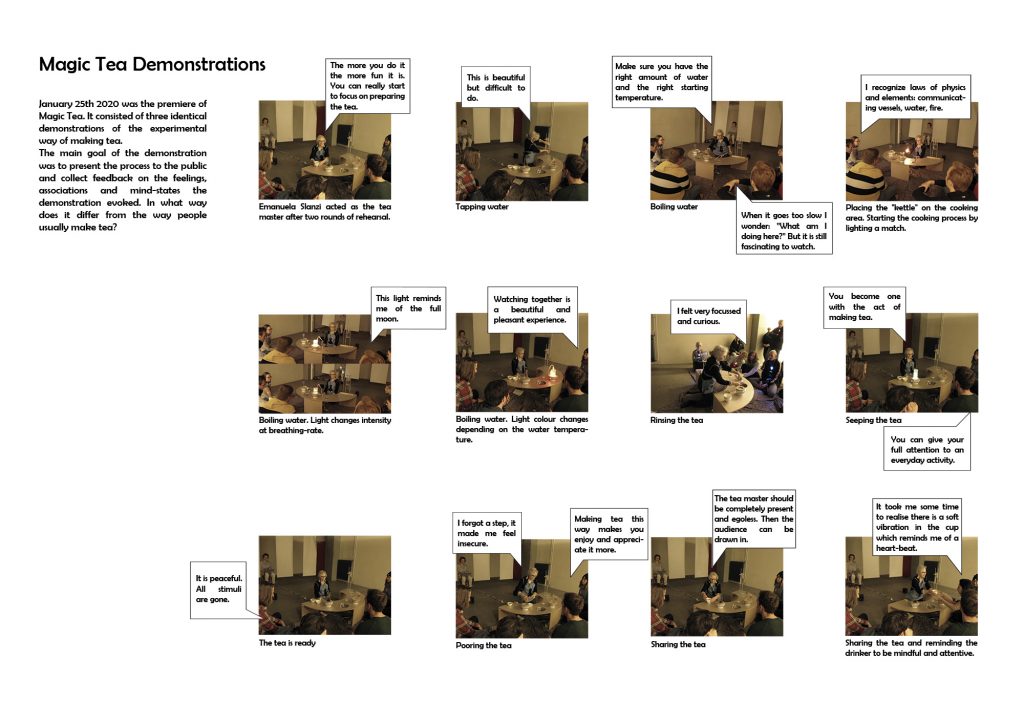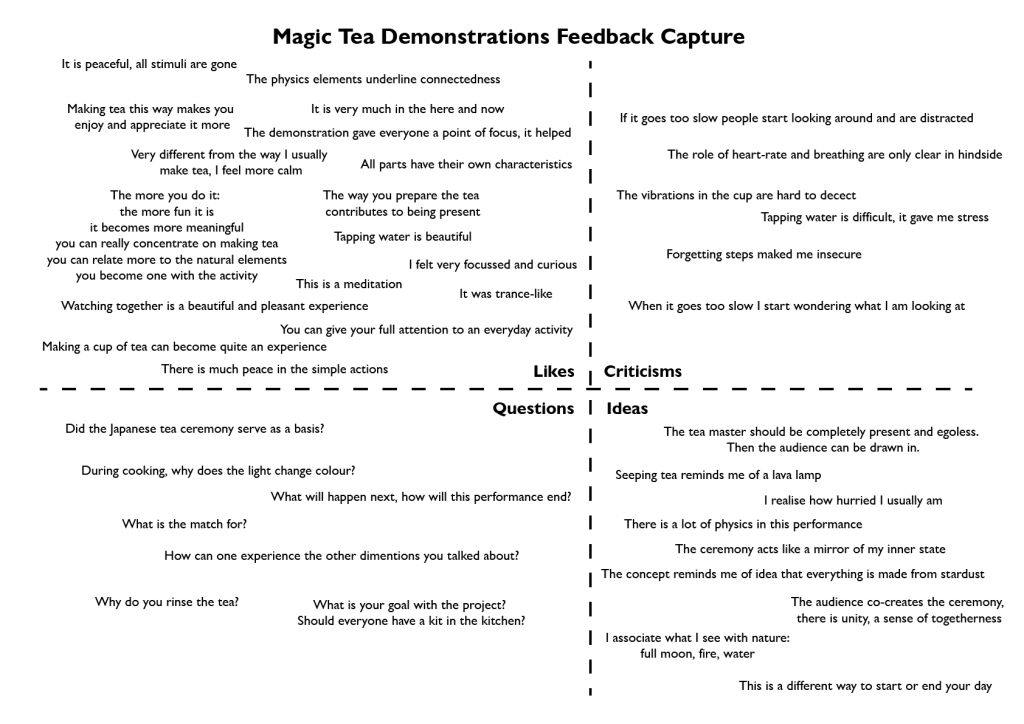Introduction
During the Cultuurnacht (Culture night) of this year Awareness Lab demonstrated for the first time the Magic Tea prototype. Technical difficulties made it impossible to have a fully automated ceremony. Instead Emanuela Slanzi was asked to perform the ceremony while designer Danielle Roberts manually operated the system. This way the audience could experience Magic Tea the way it was intended despite the technical issues.
A peaceful crowd

The feedback collected is presented in two different ways: timeline based (Fig. 1) and in a feedback capture grid (Fig. 2). This is designed by Teo Yu Siang and Interaction Design Foundation to facilitate product testing. The feedback was captured using manual note taking and a video recording. The timeline is meant to give more context to the feedback. The grid shows all the collected feedback divided into different categories. The main conclusion which can be drawn from the feedback is that the ceremony creates mind-states like relaxation, calm, interest, attention and concentration. These are some of the 7 factors of enlightenment which may lead to a transcendent experience which is the main aim of the ceremony. The feedback shows the design has potential. This is especially true because the demonstrations were part of a busy cultural event. Yet the audience was able to find calm and concentration while watching the tea ceremony.

Next steps
The criticisms concerns three issues:
- Speed of the performance. This will be solved if the system is fully automated and the water has the right starting temperature.
- Executing the steps. Users will need some sort of manual which is currently being designed.
- The feedback in the objects. The heart and breath data of the tea master was transferred to different objects, for example as light (glassware) and vibrations (tea cup). The prediction is that users will find it easier to recognise their own bio-data in the objects.
This design has made the personal bio-data key for experiencing a transcendence. This will be tested once users can start operating the system independently which is the next step in the development.
In collaboration with: Avans University of Applied Sciences, Centre of Applied Research for Art, Design and Technology (CARADT)
Leave a comment